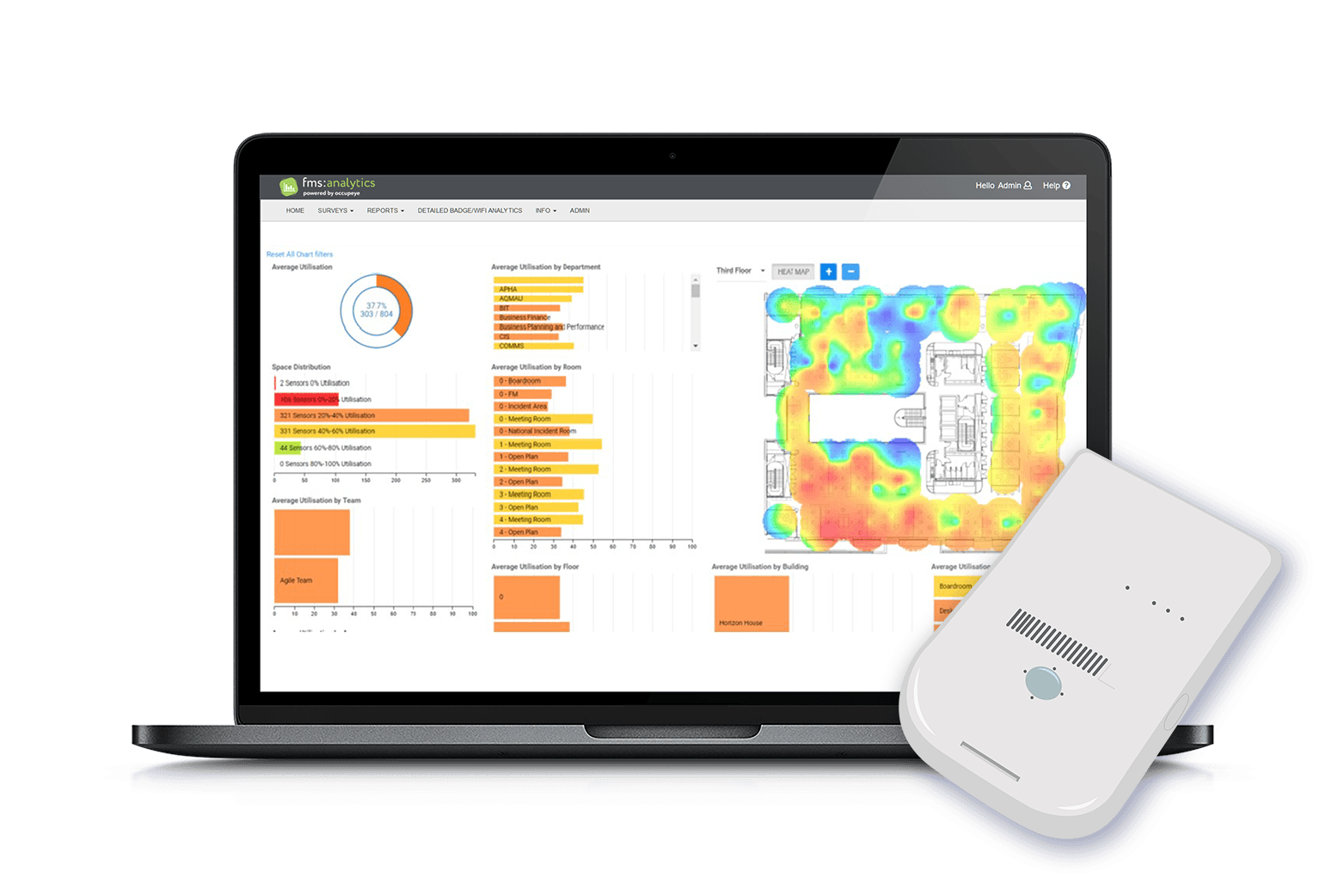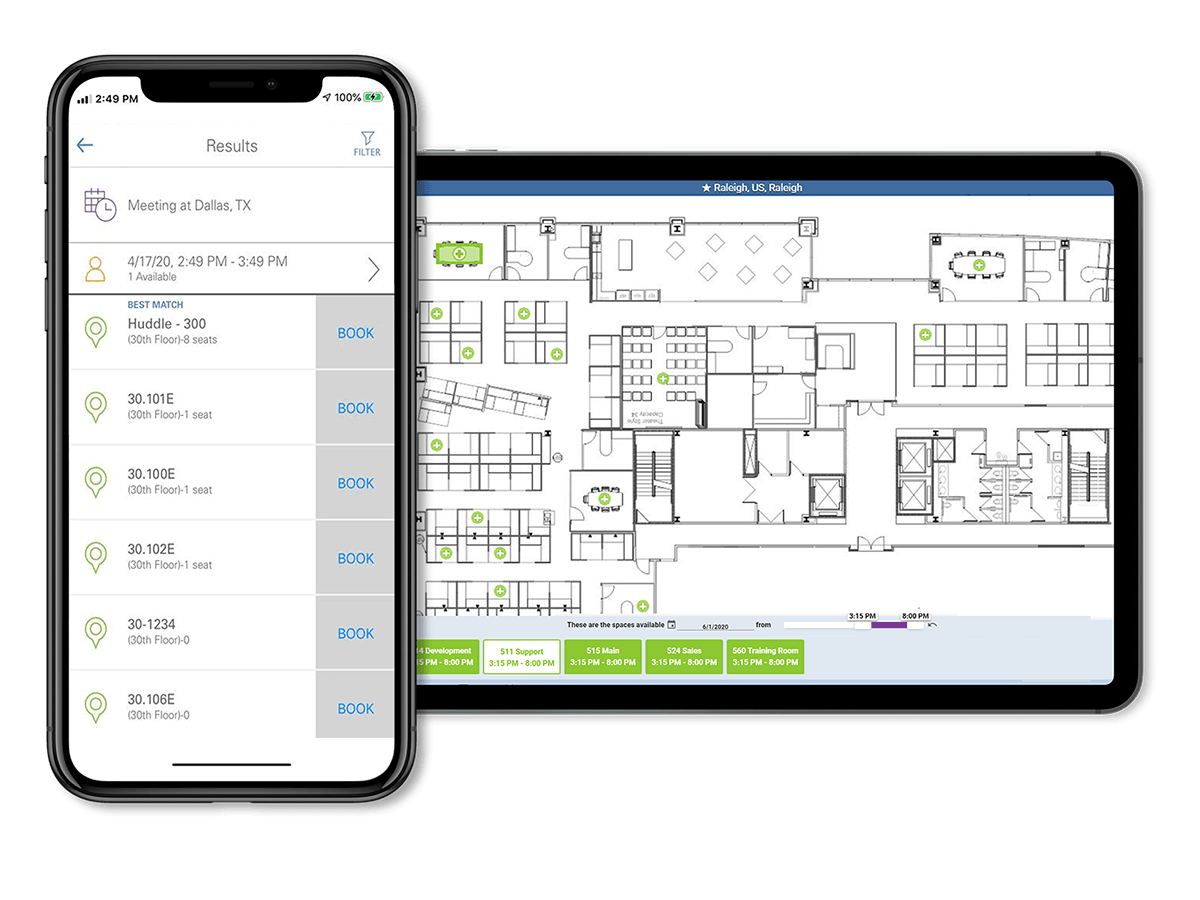The Customer
An elected local government body in the northwestern part of England, Cumbria County Council delivers a broad range of vital services to the community from social care and education to highways and fire services. Cumbria County Council maintains nearly 750 assets across their community, of which 340 are schools, and employs more than 4,500 workers.
The Challenge
The Economy and Environment department within Cumbria County Council is responsible for providing a range of services including commercial investment & property, capital programs, waste services, and regulated services such as trading standards and planning. For the last 10 years, Cumbria County Council has been following a program of workplace transformation and building modernization has been a key focus alongside digital and business improvement.
To build their business case, the Economy and Environment department knew that they needed real-time data to see how building space was actually used. Some employees had the flexibility to work remotely or across multiple sites, but others were still required to work from a designated site. In 2018, the department sought to better understand what it would look like if they reduced the number of desks in their offices and instead turn those offices into collaborative spaces where staff could come in to engage, brainstorm, and problem-solve together.

“We definitely wanted to get this right. We did a lot of market research and in the process, FM:Systems really held up as market leaders in this area and they represented value. We had a high degree of confidence that FM:Systems was going to deliver and we would get a reliable system.”
-Allan Harty, Assistant Director
The Solution
Cumbria County Council started with FM:Systems’ Occupancy Sensors to monitor how often desks were being utilized. “We deployed roughly 400 sensors so that we could build a strong, evidence-based case around how we could modernize our buildings. We wanted to know: What would the impact be? How could we do it in a managed, staged way?,” recalled Allan Harty, Assistant Director of Economy and Environment for Cumbria County Council. The initial deployment was largely set up as a pilot project for proof of concept but they received some interesting data just three months into their six-month test timeframe. “I’ll be honest, it was the data that took me by surprise because even I had overestimated the utilization of our offices…It was quite powerful in that very quickly we knew what we needed to do.”

That initial deployment of the desk utilization sensors provided solid evidence that building utilization was about 50% lower than previously understood. That hard data allowed them to make some quick decisions. “We were largely formulating the view that we could separate that building into three wings. I made the decision straight away that we could vacate staff out of one wing and lease that out. We were getting to that same conclusion on the second wing when unfortunately, COVID-19 hit so we haven’t been able to move that forward yet.”
After a successful proof-of-concept pilot of 400 sensors, Cumbria County Council decided to purchase an additional 600 workplace sensors early in 2020. The County’s goal is to increase their understanding of how and why employees are using office space so they can continue to create efficiencies while they modernize the way they work and provide services. “The reporting, the visibility that FM:Systems gives you allows you to make really clear evidence-based decisions,” noted Allan Harty.



Implementing & Utilizing FMS:Employee During COVID-19
As Cumbria County Council continued to roll out additional occupancy sensors the COVID-19 pandemic forced everyone to quickly shift to remote working. However, the pandemic has still accelerated the County’s transformation program. In fact, today the County has deployed 1000 sensors. “We currently have only about 30% of our workforce back in our building safely as we follow COVID safe standards. But to be honest, I think part of the workforce is quite happy with the new ways of working and that flexibility is something that we’ll probably hold onto for years to come,” commented Allan Harty.
When the Cumbria County Council wanted to bring key staff back to the workplace, the Council was able to utilize the desk booking and reservation system in FMS:Employee to keep employees safe. Allan Harty said, “The beauty of the desk booking system is we can lock in those people who have to be in the office every day to deliver critical services and they have a clear understanding of where they’re sitting. That’s great from an infection control perspective because you don’t have people switching in and out of the desks.”
The desk booking system also provides a nice option for other staff who want to come in from time to time from a physical and mental wellbeing perspective. Those staff can utilize the mobile app to access the floorplan view and get peace of mind that they have a desk booked for the day.
“We have greater visibility into the number of desks that have been used. We now have a level of detail that we didn’t have before about how certain teams interact with a particular building. What we have found is that some teams are utilizing a building 65-75% of the time while other teams are only utilizing it 20-30% of the time.”
-Allan Harty, Assistant Director
What’s Next
Cumbria County Council is excited to continue its rollout of FM:Systems Workplace Management Solutions as they work to improve operational, environmental, and financial performance.
Gaining critical insights to reduce property costs
“Already we’ve seen some really good quantitative benefits that you can measure around having a more agile workforce and gaining the maximum flexibility around how we use our floorspace. If we can use our buildings smarter, we should be able to absolutely maximize our savings and our returns from what is quite expensive floorspace.” Allan Harty also points out that the FM:Systems implementation has strong qualitative benefits for individual employees. “They feel like their employer is invested in them and that we’re going to give them the tools they need to do the best job they can.”



Cumbria County Council is using FM:Systems’ occupancy sensors to make sure they’re getting the best return for their investment. While the County has currently focused their deployment solely on utilization sensors, they may also consider using environmental sensors in the future to help meet their goal of minimizing energy consumption and making the ‘Corporate Estate’ carbon neutral. “The usage data enables you to adjust your heating and lighting systems so you save money and reduce your carbon footprint,” remarks Allan Harty. “And so if you can use tools and systems such as FM:Systems to actually support wider benefits, that’s a good thing in my book.”
Increasing Workspace Flexibility to Meet Employee Needs
As Cumbria County Council prepares for the future, Allan Harty is already thinking about strategy and planning for their hybrid workspaces when workers can safely return to offices. The County will have to prepare for a new workforce too—one where some want to be back in the office full time, some on a partial basis, and some not at all. “We’re going to have to manage that over the next year or so. Organizations are going to have to support people choosing to go back to work in an office and give serious consideration to what you invest in.”
Allan Harty’s team is using sensor data to inform Cumbria County Council’s workspace design decisions which will include reducing the amount of individual space and increasing collaborative space. “FM:Systems is so useful in that you can get sensors into every zone of every building and decide how to increase efficiency. We can get answers to questions like ‘can we lose those desks?’ and ‘is this the best place to create a collaborative environment?’. Because what you don’t want to do is move a team who largely occupied the space 80% of the time. You want to move the team that occupied the space 20% of the time. That’s a common-sense approach,” concluded Allan Harty.
Learn more about Cumbria County Council’s strategy for 2021 and beyond by reading their Property & Asset Management Strategy overview.









